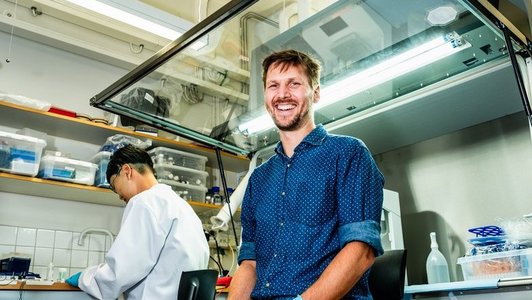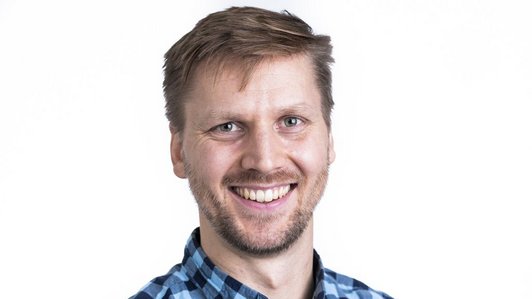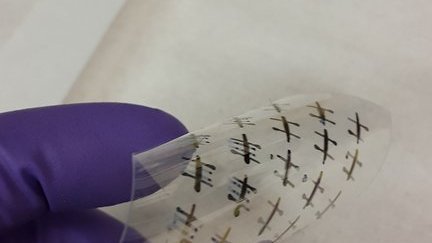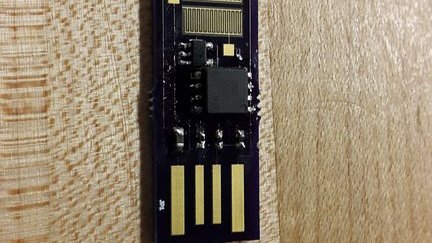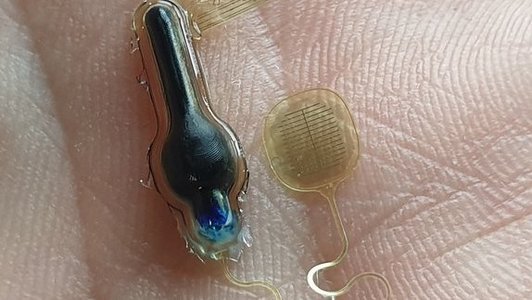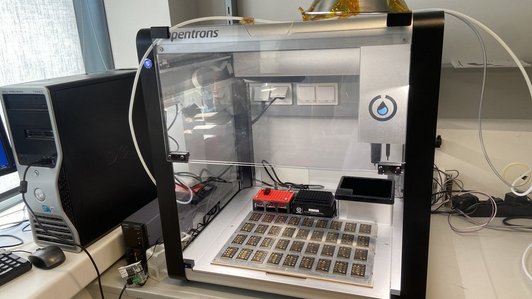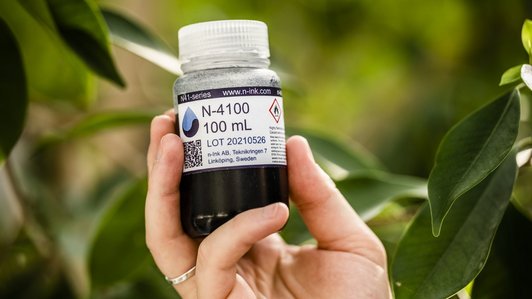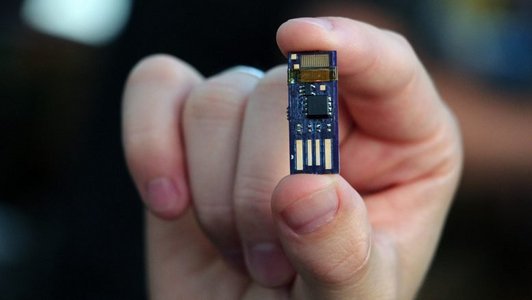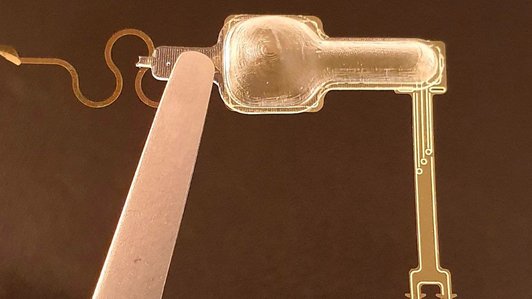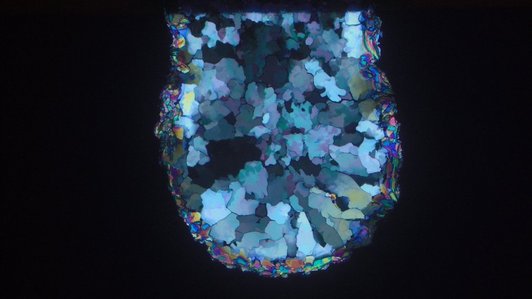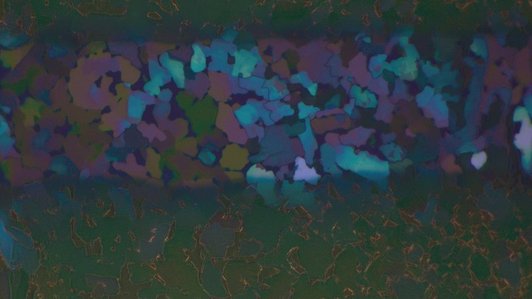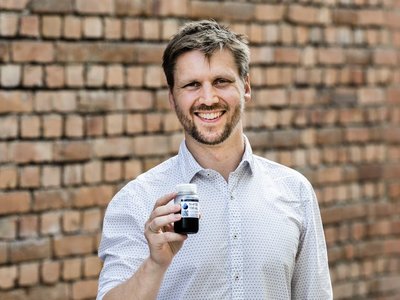

Johannes Bintinger received a Marietta Blau Scholarship in the academic year 2014/15, which enabled him to conduct research for 12 months at Columbia University for his PhD. He completed his doctorate at TU Wien and has since founded a start-up and is active in other start-ups. After a few years in Sweden he returned to TU Wien to conduct research at the Department of Applied Synthesis Chemistry, Chair of Theranostic Chemistry.
We asked Mr Bintinger about his career and his research. He gives tips for prospective Marietta Blau applicants and future scientists, describes what inspired him to do his research and what plans he has for the future:
Can you remember what motivated you to apply for a Marietta Blau Scholarship back then? Why did you choose Columbia University?
I was actively looking for an opportunity to study abroad and had already had a very positive experience at Columbia University through a previous scholarship (Marshall Plan Fellowship). At that time, however, I was only able to stay for 6 months. The Marietta Blau Scholarship gave me the unique opportunity to go to Columbia for another 12 months. As an organic chemist I joined a group in the Department of Electrical Engineering, which was certainly unusual. But my financial independence, which I gained through the MB scholarship, made this possible.
Professor Ioannis Kymissis had recently published a book on organic field-effect transistors and found it extremely interesting to test new concepts with my materials. The group's expertise and the infrastructure were excellent. Financially, the Marietta Blau fellowship was also particularly important for me, as the funding for my PhD position was only about 20% covered at the time. In fact, at the time I applied for the scholarship I only had about 4 months of financial security left. This was not a pleasant situation and caused enormous pressure but it also made me think outside the box and develop new ideas.
What impact did the scholarship have on your career and your personal and professional development?
It was an absolute jackpot for me at the time and, looking back, has had a significant impact on me. Not only did it enable me to finance another PhD year but the MB also allowed me to familiarise myself with a different laboratory culture and research landscape. Moreover, a completely new field of research opened up for me and, after a few publications and my return to Austria, it was precisely this research that enabled me to join the Austrian Institute of Technology. But it wasn't just academic interest; we patented this technology and have since even founded a start-up (NOSI; https://nosi.tech). This is about electronic – i.e. artificial – noses (https://www.youtube.com/watch?v=Z0CrmQq9kKI) that are used in various IoT applications (healthcare, industry, agriculture).
What kind of networks were you able to build during your scholarship?
During my scholarship I was able to make invaluable connections with colleagues that later became very important for my professional development. The scholarship enabled me to build an international network that I still rely on today. What impressed me most, however, was the entrepreneurial mentality at Columbia University. Here I realised that although scientific publications are important they are often of limited use to the general public unless they are translated into concrete applications or products. Professor Kymissis had already founded 4 start-ups at that time and was a real firework of ideas and energy. This had a profound impact on me as I have not often experienced such a dynamic in this form in Austria. I am now active in 3 start-ups myself.
- n-ink – https://www.n-ink.com; CEO
- NOSI – https://nosi.tech; CSO; co-founder
- Iontronics – https://www.iontronics.com; CSO
What advice would you give to people who are currently applying for the Marietta Blau Scholarship?
Be excited and enthusiastic about your research! If you're not enthusiastic, why should the reviewer be?
Ask colleagues if there are already existing networks or connections.
Ask the research group whether or not the project is of interest and develop your own creative ideas.
A reviewer will (at best) spend about 1-2 hours on your application and form a preliminary opinion within the first 5 minutes. Therefore it is crucial to explain your idea in simple words so that experts from different fields (chemistry, physics, electrical engineering) can understand the approach. Keep in mind that your reviewer may not be working in the same field or on the same problem as you. Reviewers are colleagues with 100 other commitments and deadlines; they might read your application on a train, on a plane, after putting their children to bed, or at the weekend. So make sure your illustrations are self-explanatory and get the message across effectively.
What advice do you have for current scholarship holders?
Use your newfound network and nurture it. Whether you are advancing academically or industrially, a strong network is invaluable and you can benefit from it in many situations.
Enjoy the experience of your scholarship but at the same time do everything you can to complete your project successfully. Any effort you put in early will come back to you twofold or threefold later, whether it is in the form of academic success, professional development or personal growth.
How would you describe your current research?
My current research focusses on 3 different areas:
- drug delivery systems, Iontronics - https://www.iontronics.com
In my ERC (Time2SWITCH; https://liu.se/en/news-item/tre-liu-forskare-delar-pa-53-miljoner-fran-erc) and EIC (bioSWITCH; https://bioswitch-project.eu; https://liu.se/en/news-item/tre-liu-forskare-delar-pa-53-miljoner-fran-erc; https://bioswitch-project.eu) projects we are developing a new type of cancer therapy. The centrepiece is a drug delivery platform that enables simultaneous and independent release of several drugs (pharmaceuticals) with electronic precision.
Currently, drugs are usually administered in the form of pills or intravenously, which leads to uncontrolled spread throughout the body and potentially serious side effects. Moreover, conventional methods can usually only administer one substance or drug at a time, and control is limited. Due to these limitations in many cases only drugs with limited potency or efficacy can be used today as otherwise the risk of undesirable and severe side effects is also increased by increasing the dosage.
To overcome these challenges my team and I are combining two technologies; i) organic electronic ion pumps and ii) bioorthogonal chemistry. This allows us to deliver the right dose at the right place at the right time, with electrical precision.
- conductive polymers; n-ink - https://www.n-ink.com; CEO
Our vision is to create a greener future where high-performance and temperature-resistant capacitors and batteries are in synergy with highly efficient organic solar cells. These will be produced using cost-effective and scalable printing techniques to advance sustainable electrification of the future. This research is already very advanced and companies such as Epishine (https://www.epishine.com) and Ligna Energy (https://lignaenergy.se) show what will be possible in the future. It is about printed, low-cost and customisable energy solutions that will help shape an environmentally friendly future without having to rely on rare commodities or materials that are hard to come by.
- electronic noses; NOSI - https://nosi.tech; CSO
(see 'Can my mobile phone smell' https://www.noe-familienland.at/fileadmin/user_upload/Familienzeit-Magazin/Magazin-PDFs/2022/FZ_04-2022_Innovation_webversion_optimized.pdf; https://www.youtube.com/watch?v=Z0CrmQq9kKI )
In this project/company (NOSI) we are working on an artificial nose to digitise odours. We use innovative sensor materials, a patented manufacturing process and rely on machine learning (AI) and AI-based automation to develop a unique sensor platform that is customised to the users’ needs. This opens up completely new application possibilities, from disease detection from the breath to quality control in production and food quality monitoring.
Scientific role models and Star Trek
For me, science must inspire, be fun and go beyond the current limits of what is possible. Arthur Clarke said the following: Any sufficiently advanced technology is indistinguishable from magic. As an avowed and practising Academic Trekkie (i.e. Star Trek fan) I am very enthusiastic about the technologies presented there, which were and are far ahead of their time; tricorders, hypospray, nanoprobes, etc. If you like, I am working on turning this science fiction into a science reality (https://www.youtube.com/watch?v=Z0CrmQq9kKI). However, to make science accessible to the general public it is essential to present these findings to a broad public in an understandable way. Carl Sagan (Cosmos – TV series) was of course brilliant in this context as he was able to do this like no other. The Science Busters in Austria also do this with a lot of humour and a great team.
What opportunities has the ERC Starting Grant opened up for you, and which have been opened up by the EIC Pathfinder project?
I am really grateful that the ERC has granted funding for the development of next-generation cancer therapies that will hopefully benefit patients in the long term. Moreover, the ERC gives me the opportunity to help establish a new research discipline and to establish my own group to conduct basic research.
The EIC Pathfinder project aims to utilise the results directly, i.e. ideally to develop the technology to such an extent that we can think about the first human trials in a next step. Of course we cannot do this alone and I am extremely happy to be working on this project together with an international top team and really breaking new ground. In this respect our Iontronics company is the starting point for further activities in this direction.
Overall, both the ERC Starting Grant and the EIC Pathfinder project contribute to researching a new European technology to develop new cancer therapies.
Scientific future and return to TU Wien
I will consistently work on the further development of the three technologies I am working on to bring them towards market maturity: Cancer therapies, conductive polymers and the electronic nose. To further develop the chemical aspect of the SWITCH technology (cancer therapy) and possibly also to treat other diseases (nerve regeneration and ageing processes) with it I have also decided to return to my alma mater, the Vienna University of Technology, to conduct research at the Department of Applied Synthetic Chemistry, at the Chair of Theranostic Chemistry. Theranostics is a term that combines therapy and diagnostics, which means not only recognising diseases (diagnostics = breath gas analysis) but also treating them (cancer therapy with SWITCH technology).
With NOSI we want to break new ground and digitise odours. In the first phase the new company will focus on highly applied customer projects in smart buildings (indoor air quality; bed bugs), smart farming (early detection of pests) and health (early detection of diseases and lifestyle indicators such as stress). The IoT sector offers incredible opportunities and applications.
We also have very ambitious plans for n-ink and are currently preparing the market launch of our third product (N43). Our vision is to create a greener future where high-performance and temperature-resistant capacitors will work together with highly efficient organic solar cells produced through cost-efficient and scalable printing techniques to advance sustainable electrification in the future. Together we will pave the way to a greener, smarter and electrified future.
CV:
Johannes Bintinger completed his PhD in Technical Chemistry at Vienna University of Technology in 2016 and then worked as a PostDoc at the Austrian Institute of Technology on electronic noses and biosensing platforms before starting his second PostDoc at Linköping University in the field of drug delivery systems in 2019. In 2021 he became CEO of n-ink and as co-founder of NOSI (2023; electronic nose) and Iontronics (2023; cancer therapy) he developed various technologies to market maturity. In 2023 he was awarded an ERC Starting Grant to develop a novel cancer therapy.
Links:
ERC and EIC projects – cancer therapies
- www.bioswitch-project.eu
- https://www.youtube.com/watch?v=YV4dKp7nLzo
- https://www.iontronics.com
- https://www.youtube.com/watch?v=FPK71TUfsTo&t=3693s
N-ink – conductive polymers
- https://www.n-ink.com
- https://www.sigmaaldrich.com/SE/en/product/aldrich/932647
- https://www.youtube.com/watch?v=Lu4gxXiUkUw
NOSI – digital nose
- https://nosi.tech
- https://www.youtube.com/watch?v=Z0CrmQq9kKI
- https://www.noe-familienland.at/fileadmin/user_upload/Familienzeit-Magazin/Magazin-PDFs/2022/FZ_04-2022_Innovation_webversion_optimized.pdf
- https://www.diepresse.com/5278740/von-star-trek-zur-kuenstlichen-nase
- https://www.trendingtopics.eu/dieser-wiener-geruchs-sensor-koennte-nach-drogen-sprengstoff-und-schlechten-lebensmitteln-schnueffeln

